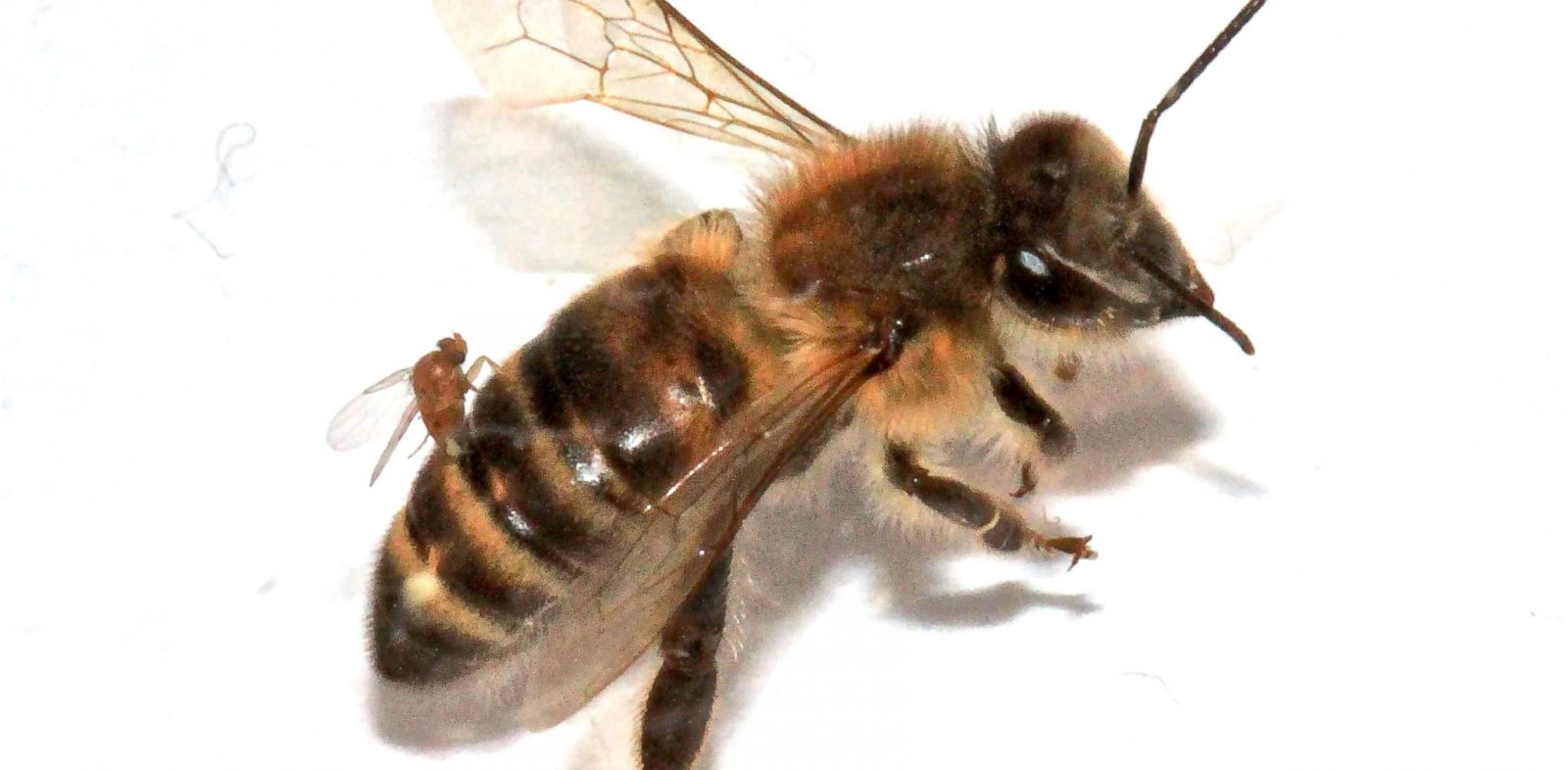It’s bad enough we have to deal with human zombies. Unfortunately, it seems nature has gone out of its way to make zombies out of our poor pollinating friends, the bees. Over the past several years, there have been stories of ‘zombie bees’ (also called ‘zombees’), which are exactly what they sound like — parasite-ridden bees that exhibit strikingly similar behavior to the ghoulish creatures we see in the movies.
In 2008, San Francisco State University biologist John Hafernik accidentally discovered a parasitic fly called the Apocephalus borealis, which has since spread across the country to as far east as Pennsylvania and New York. Hafernik had noticed a few bees on the SFSU campus walking around in circles on the ground, so he collected them in a vial to feed to his pet praying mantis but neglected them soon afterward. When he came back a week later and looked at the bees, the vial was filled with what looked like little brown fly pupae. That’s when he knew that these bees were parasitized.

A bee is infested by a female fly, the first step on its way to becoming a zombie bee
Hafernik says that the bees characteristically “fly around in a disoriented way, get attracted to light, and then fall down and wander around in a way that’s sort of reminiscent of zombies in the movies.” According to Hafernik, this phenomenon starts with the zombie fly, or the Apocephalus borealis, latching onto honeybees and laying eggs that eventually hatch and begin the eat the bee alive from the inside. After death, the flies then crawl out of the bees’ neck and embark on their “flight of the living dead”, which is a sure sign that they’re zombified for good and aren’t coming back. Hafernik explains, “The bees that get parasitized essentially get bee insomnia. They leave their hives at night, which is a really bad time for honey bees to be leaving their hives.”
In 2012, Hafernik published the first study that documented the fact that the flies infect honey bees as well as bumblebees. Using DNA barcoding, he confirmed that the larvae of phorids that emerged from honeybees and bumblebees were the same species. He put to use a hive of bees and assessed it over a period of eight months, with a nearby observation hive as a control. After finding a host of stranded bees near lights during nighttime, he and his team of researchers periodically placed an enclosure over their primary study hive and studied the rate of parasitism of bees that left their hive at night. The number of stranded bees declined as the enclosure was put in place, indicating that stranded bees generally came from their main study hive. Additionally, he found that bees that left the hives at night were more likely to bear the parasite than those that foraged during daytime.
These results tell us that zombie bees demonstrate the unusual behavior of abandoning their hives at night. However, we can’t exclude the possibility that some of the zombie bees may simply go out during normal foraging times and choose to die a fair distance away. Based on the results of his study, Hafernik drew up some questions about the zombie fly. He wants to find out how exactly the parasites are affecting the bees’ behavior, and what motivates the infected bees to abandon their hives — do they leave of their own accord, or do they give off a sort of chemical signal that prompts their hivemates to throw them out?
With the recent decline in the honey bee population due to colony collapse disorder, vampire mites and nutritional deficiencies, the surge of zombie flies presents yet another problem for the bees. To expand his research on the plight of honeybees, Hafernik has launched ZomBee Watch, a nifty tool that invites everyone to become a “zombee hunter” by collecting bees found near lights and uploading information about their sample to the internet. The map on the website reports that the highest rates of infection lie along the western coast, but it is very well possible that there could be some zombie bees on our campus at this moment. We’re a long way off from fully understanding the workings behind the zombie bees, starting with their link with the mysterious colony collapse disorder, but with time, we can aid research by taking advantage of this generous tool that Hafernik has bestowed us. Honey bees are no doubt of particular importance to humans, as we rely on them for pollinating many of the crops that make up our diet. Although it seems unlikely that bees are going anytime soon, we should still remain cautious of this newfound threat to our friends.
Here is a video detailing the infection process of zombie bees:

I remember reading about this awhile ago and was planning on doing a blog about it myself. The parasitic creatures that latch onto the bees are quite an interesting specimen. The following is a long to an article I found about the species. Click Here